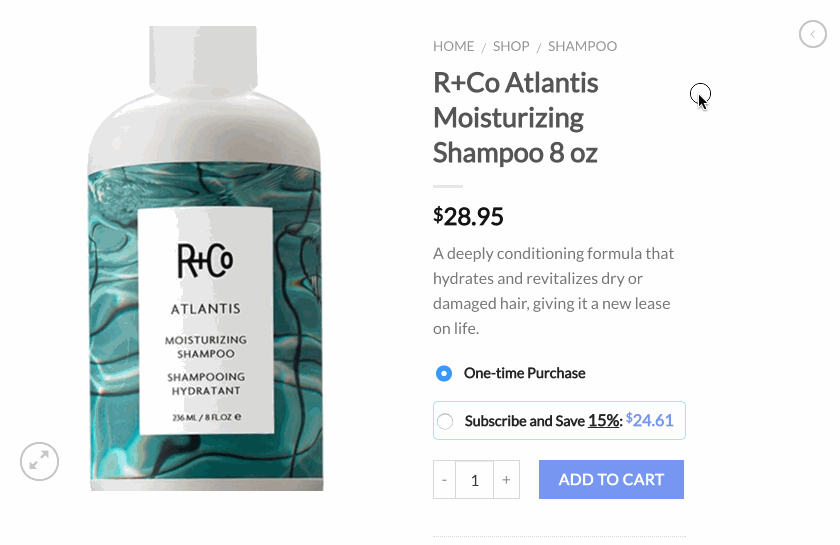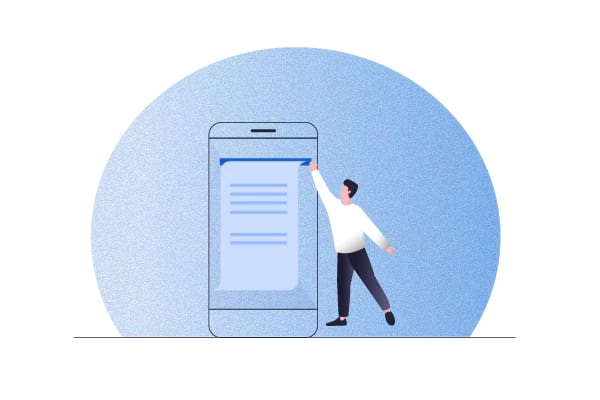Wondering what the monthly recurring charge metric is all about? In this primer, we’ll define what monthly recurring charge is, its different types, and how businesses (more so, eCommerce businesses) can benefit from implementing recurring payment models.
Here goes.
What is a monthly recurring charge? A definition.
A monthly recurring charge (MRC) is the amount that a business automatically charges a customer each month. Unlike what most people take it to be, a monthly recurring charge doesn’t always have to be a fixed amount — it can be variable too. The important thing here is that users agree to be charged each month for their subscriptions. They don’t need to place a repeat order, initiate (or authenticate) a payment, or complete a tedious checkout each month.
That said, some subscription businesses (voluntarily) notify their users before charging them a subscription payment — which is a good practice. This gives consumers some time to pause or cancel an upcoming payment. Alternatively, some only set up semi-automatic payments, where users need to allow or authenticate each recurring payment before it’s processed.
Traditionally the monthly recurring charge metric has only been associated with B2B and B2C SaaS/software businesses and service providers. G Suite, for example, is a SaaS service for which you pay monthly. A comparable practice is that agencies lock in their clients with annual contracts that require monthly installments.
For access to their content, streaming services also charge monthly fees. Netflix is an example. Digital magazine subscriptions, too, charge users monthly for access.
The subscription-based eCommerce business model also includes trying to get customers to commit to a monthly recurring charge. eCommerce business owners are increasingly converting their products into subscriptions to achieve predictable growth. In this article, we’ll mainly focus on the monthly recurring metric as it applies to the eCommerce industry. Let’s start with its types.
Types of monthly recurring charges in the eCommerce industry
When it comes to monthly recurring charges, eCommerce subscriptions can be of two types:
1. Fixed recurring subscriptions
In fixed recurring subscriptions, you’re looking at fixed pricing plans. You charge your customers the same amount each month using their saved payment details. Depending on the payment gateway you use with your subscription solution, you can let your customers sign up for multiple subscriptions simultaneously. Alternatively, you can create a “product bundle” with the items your users often purchase together and sell the product bundle as a subscription. Yet another way to set up a fixed monthly eCommerce subscription service is to charge subscribers a flat amount each month to receive a set of products — a curated box service, for instance. Fixed subscriptions are easier to implement, and most payment gateways support them.
2. Variable/irregular subscriptions
In contrast to fixed recurring subscriptions, here, you can charge your customers a variable amount each month. The amount you charge depends on the items you shipped during a month — almost like “quantity-based” subscription billing.
Take a pet food replenishment service, for instance. If a subscriber signs up for a monthly flat rate subscription but requests an additional pack of supplements in a specific month, you’ll be charging an amount different from the base subscription charge. This is still a monthly recurring charge, but it’s variable.
As you can tell, this is how upselling and cross-selling happen in a subscription-based eCommerce business. Note that only a select few subscription solutions like QPilot (Autoship Cloud) let subscribers make changes to upcoming orders. Also, not all payment gateways support changes to scheduled payments. So using the right subscription solution and payment processor combo is essential.
With both such subscriptions, where you charge a monthly (fixed or variable) recurring charge, you can set up a one-time setup fee to cover your subscription costs.
Sign up for Autoship Cloud
If you’re looking to convert your products into subscriptions and charge fixed or variable monthly recurring payments on your WooCommerce store, check out Autoship Cloud.
How a monthly recurring charge model works
1. A merchant uses a subscription solution that lets you customize options for recurring orders (a plugin like Autoship Cloud in the case of WooCommerce) to set up monthly subscription plans.
2. When customers purchase such a subscription, as part of the checkout process, they agree to get billed each month (automatically) for the subscription amount for a set number of billing cycles or indefinitely (until canceled).
3. Also as part of the checkout process, the customer agrees to have their payment information stored in the merchant’s billing system for future payment processing, in line with the subscription.
4. As per the subscription cycle, the subscription solution regenerates an order, creates a repeat bill, and processes an automatic repeat payment for the same. As noted earlier, it’s a good practice to notify users before charging.
5. In the case of a successful payment, the subscription solution sets a new date for creating a repeat order according to the subscription plan.
Benefits of setting up a monthly recurring charge business model
Convenient restocking for users: If you sell products that need frequent restocking — think pet foods, home supplies, supplements, wellness items, CBD products, consumables, etc. — users need to return to your store to replenish. If you convert your products into subscriptions and let users subscribe to them for a flat monthly recurring charge (often at a discounted pricing), they can avoid visiting your store, finding the items they need, and completing a tiring checkout process. This convenience translates to improved customer experience, increasing customer retention and customer lifetime value.
Guaranteed recurring revenue: eCommerce stores’ average user retention rate is 1%, whereas subscribers have an impressive retention rate — up to 41% — even beyond the 12-month mark, depending on the industry. You can build guaranteed (regular) revenue and almost secure profits for a reasonable timeline by converting a percent of your shoppers into subscribers. If you factor in subscriber churn accurately, you can do even better business forecasting.
Improved payments logistics: Even for eCommerce businesses (both B2B and B2C), a considerable part of the revenue stays trapped in the form of unpaid invoices and late payments. That explains why eCommerce businesses offer users additional discounts if they pay upfront using a digital method over taking the cash on delivery option. Converting products into subscriptions is yet another way to go about this challenge. When you charge a fee upfront, you can maintain a better cash flow for daily operations and build a bandwidth for marketing/sales ops. Besides, all of this is automated.
All that said, setting up subscriptions or a recurring monthly payment model doesn’t come without its challenges. Churn, failed payments, and subscription fatigue are common roadblocks for subscription businesses. Using a trusted recurring payments system will facilitate the process, but you should also have a good strategy in place. Here are eCommerce subscription tips to help with these.
How to set up a monthly recurring charge model on your online store
Most eCommerce platforms don’t support recurring billing models by default. But you can convert an eCommerce solution into a subscription platform that can charge on a recurring basis with a subscription app. If you have a WooCommerce store and want to set up a monthly recurring charge model, check out Autoship Cloud.
Autoship Cloud brings end-to-end subscription management to WooCommerce and lets you convert your WooCommerce products into subscriptions. Within minutes and just a few clicks, Autoship Cloud enables you to set up Amazon-like subscription schemes on your store and accept recurring payments:

Autoship Cloud works with a host of payment gateways like PayPal and Stripe to add a recurring payment system to WooCommerce. Depending on the payment gateway you use, you can offer payment methods like credit cards and debit cards. You can also easily upsell and cross-sell items as Autoship Cloud can both accommodate changes to upcoming scheduled orders and communicate the same to payment gateways to update the amount to be charged.
Wrapping it up…
Setting up a monthly recurring charge business model for your online store — or simply converting your products into monthly subscriptions — can build a regular revenue stream for you. It’s one of the top growth tactics for eCommerce businesses looking to build long-term customer relationships.
Ready to pivot to the subscription model or at least add subscriptions to your store’s sales mix and collect recurring monthly charges? Sign up for Autoship Cloud now!
Grow Subscriptions with Autoship Cloud
Mission Farms migrated to Autoship Cloud powered by QPilot so that they could offer a better experience for their existing Subscribers, reduce the overhead of plugins + code needed to manage subscriptions with their online store, and work with a partner that knows how to support growing their subscription revenue. Since their migration in July of 2022, Mission Farms has improved their Active Subscriber count 52% and grown Subscription Revenue over 62%!
Ready to grow your subscription revenue?



